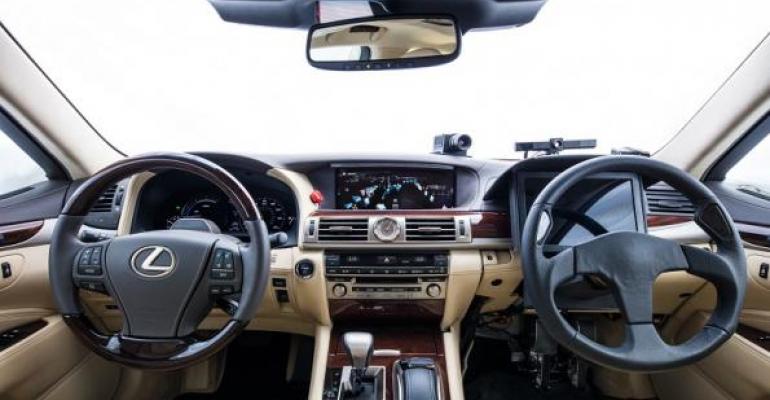Automakers and suppliers working to bring Level 5 autonomous capability to fruition may have a good handle on how their vehicles will perceive and plan.
But a third “p” element is tougher.
Prediction, that is anticipating what drivers, pedestrians and others on or near roadways will do, is a current AV development hang-up, says a top Toyota official.
“It’s the prediction piece that’s still the great unknown,” Gill Pratt, CEO of Toyota Research Institute, tells WardsAuto in an email interview. “Humans are very good at predicting human behavior on the road. Machines will need to be able to predict and anticipate human behavior much better.”
Pratt has spoken previously about how humans intuit teenagers on a corner attempting to cross a street may cross against the light, while a woman pushing a child in a stroller is more likely to obey the signal.
“Automated driving in most cases is actually pretty easy to accomplish, but it’s managing the situational ‘corner cases’ that present the biggest challenge,” he says, adding Toyota has a “tremendous amount of work” ahead to develop the artificial intelligence necessary to handle the “infinite” scenarios a Level 5 AV will encounter.
Insufficient prediction capability also will become an issue in the controversial Level 3 stage of autonomy, when a vehicle should be able to handle most scenarios but a human driver still needs to be ready to resume control should a tricky situation arise.
To alert a distracted driver to take over the task of driving, five seconds’ warning time likely is enough, while 15 seconds may be too much, he says.
“You still have to be ready to accept a hand-off, and the SAE definition is ‘with sufficient warning,’” Pratt says in an earlier interview. “How much is that? If it’s 15 seconds’ warning, we worry about that, because can a car really have a crystal ball to predict what’s going to happen 15 seconds in the future so that it sounds the alarm now?”
And while 15 seconds would be plenty of time for a driver to resume control of a vehicle if he or she are reading a book, it may not be enough time if they are sleeping.
“What does it take to rouse you? It may be 30 seconds. It may be even more,” Pratt says.
Some automakers, such as Ford, have said they will skip Level 3, to avoid a situation where the vehicle would hand off control to a driver who may not be ready to assume it.
“Part of the difficulty in the industry right now is everybody has a different definition of Level 3, some of them small (warning) times, some of them large (warning) times,” he says. “We think the large-time ones may be extremely difficult, because of the prediction issue. And in that case, just skip to Level 4.”
Toyota has been one of the more restrained automakers when it comes to AVs, and even shies away from the term autonomous, preferring “automated,” which it feels conveys the idea a human driver still is necessary in the operation of a vehicle.
Still, while the Japanese automaker believes fully self-driving Level 5 autonomous vehicles are years, maybe decades, away, it sees Level 4 autonomous technology on vehicles operating in geofenced areas possible in the next several years.





